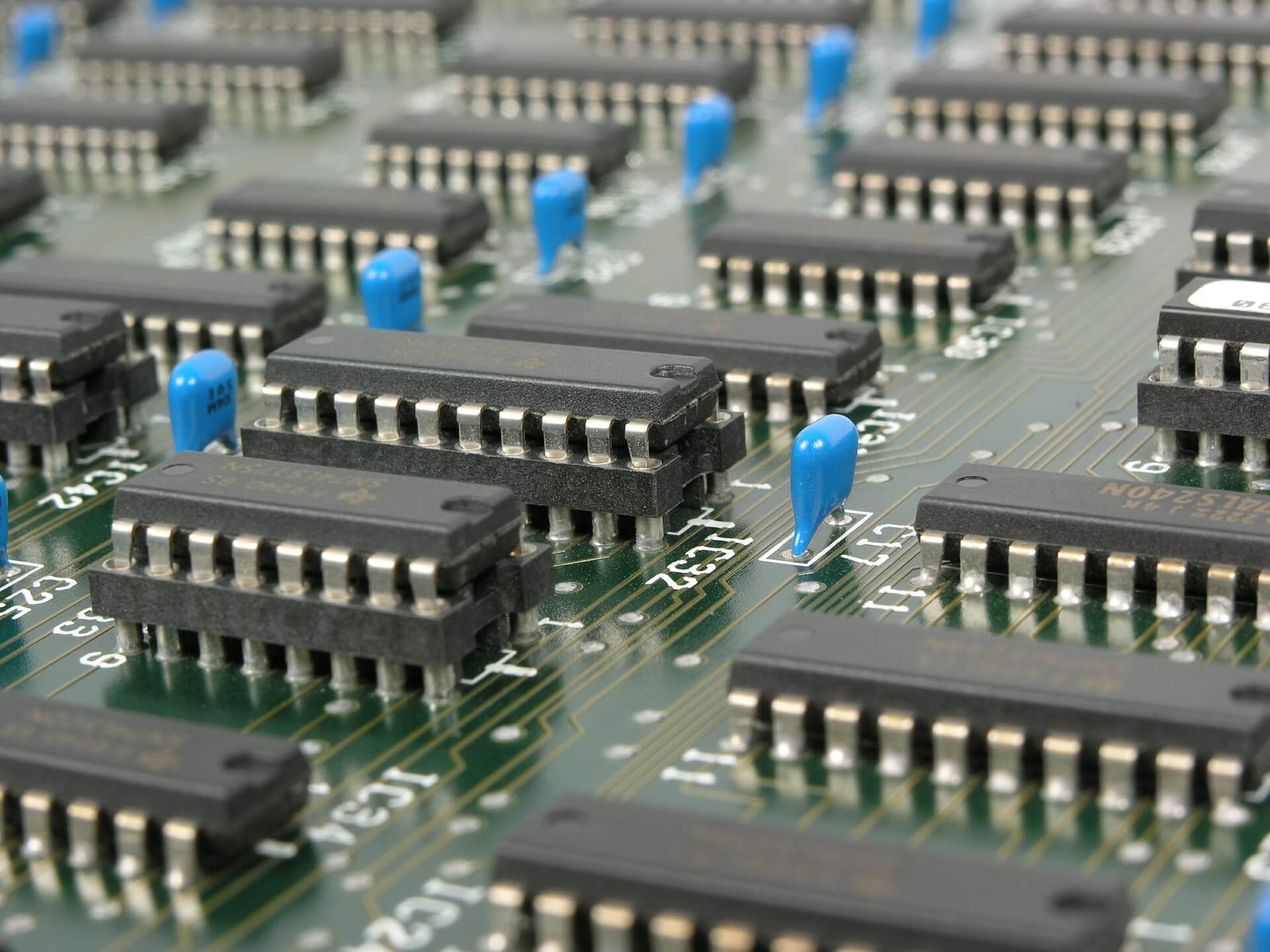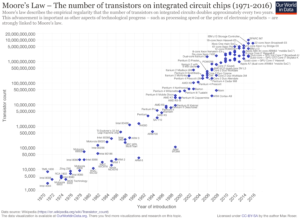The End of Moore’s Law
Moore’s Law is not really a law. It is an “observation” that was made by Gordon Moore in a 1965 edition of Electronics magazine. He observed that the semiconductor industry was able to double the number of transistors in a microprocessor every two years and that would therefore double computers’ processing power every two years. Based on the improved pace of adding transistors, Moore later updated his “law” to every 18 months.
Moore’s Law is important for the United States as it pertains to technologies that enabled massively powerful computers that are critical for national security and industrial competitiveness. The technologies behind Moore’s Law are enabling the “Internet of Things” (IoT) and changing the ways we interact with each other and the world. Furthermore, the semiconductor industry is a mainstay of U.S. industrial activity that employs millions of Americans and is a major exporter.
While Moore’s Law is not a “law” in the conventional sense, it could be considered a “command.” Since its origins, scientists and engineers in the semiconductor industry have found ingenious ways to keep up the pace of increasing computing power, but without increasing the number of transistor needed to provide that power. Some of these innovations have included RISC (Reduced Instruction Set Computing), parallel processing computing, multi-threading, and most recently multi-core processors.
People have been mistakenly predicting the end of Moore’s observation for many years. However, there are some physical laws of nature that are starting to come into play that may really signal its demise. The semiconductor industry uses the CMOS (Complementary Metal–Oxide–Semiconductor) process to make microelectronic circuits (chips). The material most often used as the base for this process is silicon. A light source is shined through a picture of the circuit (the mask) to activate photosensitive materials that have been applied to a silicon wafer. The wafer is then “washed” with certain chemicals, and the material that is left behind becomes the microelectronic circuit.
The credible reason that the end of Moore’s Law may be in sight is that the “line spacing” of the circuits is getting so narrow that it may not be physically possible to run electricity through the circuit without interfering with other lines. The currently used state-of-the-art technology produces line spacing of 14 nanometers. Technology is coming that will provide feature sizes of 7nm, and the hope is to get to 4nm features. Another major challenge is that the light sources cannot be focused well enough to make lines that small. The result is that the photolithography process is becoming so complicated that companies may not be able to profitably produce chips with smaller line spacing.
Moore’s Law has served the United States and computing technology very well for more than 50 years. However, it is clear that the end is in sight. The semiconductor industry is a global competitive industry and the U.S. has always been its leader. It would be terrible to lose the race at the end of Moore’s Law. The race for “Beyond Moore’s Law” has already begun, and it is critical for U.S. competitiveness that we maintain our leadership position.
Source: Our World in Data, by Max Roser. Available here.
Join the Catalyst Monitor
Join our community, where we push out regular insights to help maintain situational awareness on technological and socioeconomic trends.




